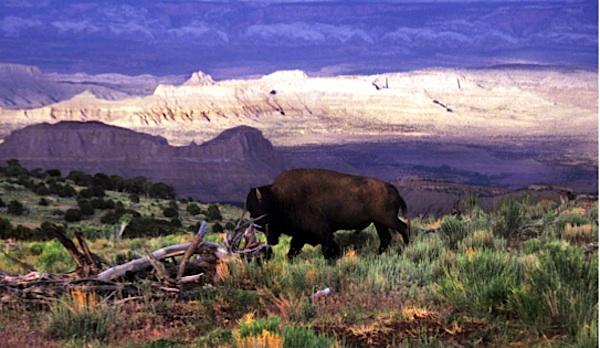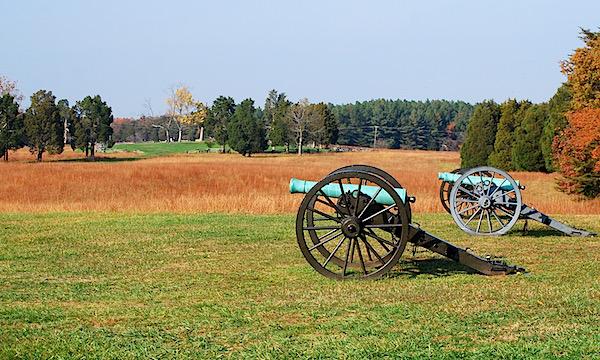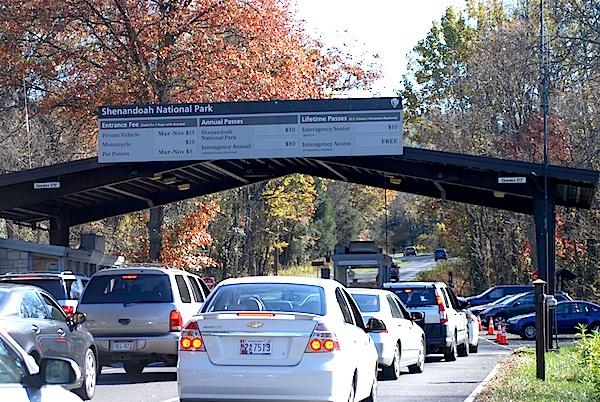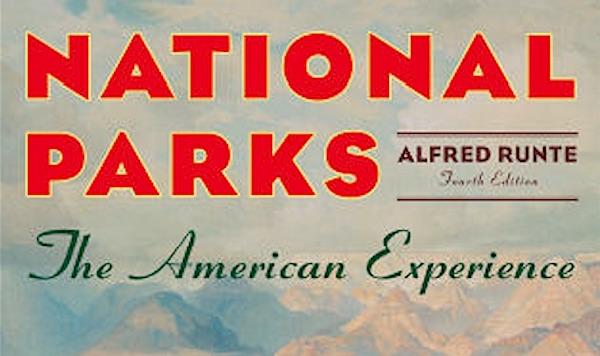
Heading into its centennial year, what must the National Park Service do to flourish?
Editor's note: Harry Butowsky spent more than three decades working for the National Park Service as an historian. He's worked for a handful of directors and seen much change in the agency. Understandably, he has an interesting perspective on the upcoming centennial of the National Park Service.
The National Park Service reminds me of a proud old ship sailing confidently across the North Atlantic. The captain is beaming and the passengers seem contented, at least, those traveling first class on the upper decks. It's below decks that the problems lurk. The crew is perhaps too easy going, believing the ship will always reach New York. However, the engines are old, the iron plating is thin, and the rivets are working loose. Granted, the Titanic is not a good analogy, since that ship was perfectly new. Otherwise, the analogy fits. The older things get'including institutions'the more they are in need of major repairs.
In the case of the National Park Service, the overhaul is long overdue. I spent my entire career in the History Division, which operates out of Washington, D.C. Some directors listened to the Division and others did not. Those that listened, I do believe, enjoyed smoother sailing in every division.
So, you will understand where I am coming from. I base my call for new backbone in the Park Service on good history. Only if the Park Service wants to tell a credible story can its centennial rise above mediocrity. My recommendations start with coming to grips with reality, and end with a call to historical arms.
This is my manual, if you will, for a great centennial, after which I invite you to offer your own. Just don't tell me that history is unimportant. In the Park Service, there is already enough of that myth going around.
Priority One: Address the Backlog
First, put this figure solidly in your mind'$11.5 billion. That's the backlog'the true funding shortage crippling all of our national parks. What is more, we can be sure that Congress is not likely to free up even a fraction of those needed funds. How can we be sure? Because the nation is $18 trillion in debt, with another $100 trillion in unfunded liabilities. At $4 trillion annually, the entire annual budget of the United States cannot possibly meet those backlogs. We have to address the Park Service backlog as part of that greater problem, or else nothing we suggest will make sense.
Instead, Park Service administrators have opted to act as if nothing is amiss. Committees have been formed; deals are being struck. It's as if the backlog did not exist.
Consider the blizzard of news releases announcing new directions for the agency. That's not an iceberg up ahead, folks. That's an opportunity to 'reach out.' Fine, but how will the reaching out be funded? If these new initiatives cannot be paid for, how can any of them be considered sincere?
Here's just one example: http://citiesspeak.org/2015/04/20/national-park-service-launches-nps-urban-agenda/ So it's an urban agenda now. But again, where is the funding? Urban, rural, or wilderness, how will these 'initiatives' be paid for? If the problem holding everything back is money, what good does it do to keep making promises that no one can possibly keep?
Priority Two: Make the Size of the National Park System Fit the Budget
Face it. There are just too many units in the National Park System for the money the Park Service has on hand. The country may want 407 units, but the agency cannot afford half that many. The proof again is all those news releases. That is what bureaucrats do when they lack solutions. They keep conjuring up new initiatives and programs, hoping that one will prove a 'hit.'
They hope then to take the 'hit' to Congress and ask for the money they don't have. Fine, but $11.5 billion? That will require more than an urban initiative, or a youth initiative, or a science initiative, or a deal with Budweiser. It will rather require convincing the United States Congress that 'eventually' will be too late. Preservation cannot run on 'eventually.' Those dollars are needed now.
Will the parks get those dollars? History says no. In Congress, waiting for money can turn into an eternity. Just ask Yellowstone in 1872. In 2016 and beyond, we need to face the reality of our current budgetary and staffing limitations. I say that means cutting parks.
What would be the magic number to cut? Actually, I would not cut a one. I would simply put those parks back where they belong'with the states, or even cities and counties, that should have been given the responsibility in the first place.
Before we do that, I hear some people screaming, we should raise the fees at the gate. That will work somewhat for the bigger parks, but not every park is as popular as Yellowstone or Grand Canyon. In the end, it still comes down to Congress and that $11.5 billion backlog. There is only so much money to go around.
Certainly, not every park needs to be a federal entity just because the states refuse to act. In the 1920s, the preservation of many desirable landscapes was confidently left to the states. To name just a few, look at the wonderful state-park systems in New York, Pennsylvania, Wisconsin, and California. Why is that not happening now? Because many states'and many environmentalists'think of the federal government as a bottomless pit. Just shake the money tree and write another news release. Park created and problem solved!

National battlefields and military parks such as Manassas (above) and Fredericksburg and Spotsylvania are prominent in the National Park System, but how many battlefields does the Park Service need?/Kurt Repanshek
Unfortunately, the problem only keeps worsening. How many battlefields do we need to interpret the Civil War, for example? There were 5,000 separate actions. Cannot some of the 'action' revert to the states? And parkways, How many of those do we need? While I personally use the George Washington Parkway, I am not convinced it needs to remain a national park.
Mount Vernon is not a national park. Does that in any way lessen its significance? Is not George Washington still a national figure? Then there is Steamtown, in Scranton, Pennsylvania. Sure, let's have a great park acknowledging railroad history, but why can't it managed by a state? Steamtown was blatantly intended to boost Scranton's local economy. Why should Uncle Sam be doing that?
And the urban parks. We all love open space. But why must the federal government be expected to fund them all?
Granted, it seems that government always has another pot of money. The problem is: It is always someone else's pot. No doubt, decommissioning just one aircraft carrier would fix the backlog, but that will never happen. American culture just doesn't work that way. That aircraft carrier employs people, too. We have to fix the number of parks within what Congress is willing to give the National Park Service, or Congress will not hear a word.
Priority Three: Establish Zero-Based Budgeting
Toward that end, the National Park Service needs to implement a zero-based budgeting system that will look at all of the regional and Washington, D.C., offices and programs. Does calling redundancy 'regional' make it right? Why can't every superintendent report to a leaner agency? But no, the staffing adjustments always come at the bottom, followed by a cry for more volunteers. Somewhere in that pile of news releases, I believe I saw that one. How can young people be expected take any 'initiative' on a salary of $10 a day? You want more 'minorities' to believe in the parks'and work in them? Then pay them an honest wage.
Priority Four: Put History Back in the Parks
None of this is of any surprise to historians. In various forms and guises, they have seen all of these problems before. This is to explain my pet peeve. It's actually misleading to create a 'historical' park. After all, every park comes with a history. Then let's see that visitors learn it, whether the park be Gettysburg or Yellowstone. The Park Service should start with every employee, including everyone working for the concessionaires. It's not just a job, folks. It's a calling. If you just want a job, McDonalds is hiring, and there should be plenty of openings at Burger King. In the parks, you work for generations yet unborn, and their legacy begins with your knowing that.
Start with your park's administrative history. You say your park doesn't have one? Then get an M.A. and write it as a thesis, or perhaps the dissertation for your Ph.D. Every park should have an up-to-date administrative history. How did we get this park? What is its mission? Where have we failed the public in the past? And believe me, we are always failing the public. That is what an administrative history is meant to correct for the future.
Nor should administrative histories be limited to individual parks. The system itself needs many such histories, broadly targeted to system issues. Can anyone doubt the importance of the role of concessionaires in park history? They have power. They have money. How does that influence the parks for good or ill? Where is the comprehensive history of the relationship between the National Park Service and the concessionaires? Here again, there is no such history, and some employee'with proper incentive from the agency'just might take the initiative to write it.
And fee policy. The last time the Service completed a history of that was in 1982. An update is long overdue. After all, fees now stay with the parks. Consider the 'backlog' again. Can it truly be erased just by changing the fee structure? We simply don't have enough history to guide us. We are still blindly looking forward without honestly looking back.

How far can higher fees go towards erasing the Park Service's maintenance backlog?/Kurt Repanshek
Nor does it end with fees and parks. Key documents such as the organizational charts and lists of all National Park Service Management personnel have not been updated since the late 1980s. See Organizational Structure of the National Park Service 1917 to 1985. Another key document, Historic Listing of National Park Service Officials.
And let us not forget the directors. At one time they were inclined to write useful and important books, or extensively shared their career findings with professional historians. The lessons a director learns are invaluable. The last to detail his experiences in a book was James Ridenour. The Service should commission a history of the management decisions and operational successes/failures of every director that ever served.
So, too, the National Park Service Thematic outline was last updated in 1987. Perhaps it is time for a new update. I am not referring to the 1994 thematic outline, but to the original thematic outline that dated back to 1929 when it was first conceived, History and Prehistory in the National Park System and the National Historic Landmarks Program.
If there is ever a commission charged with recommending the total number of parks which should be kept'and which should be transferred to state, local, or private authorities'this document will be needed. Better said, it will be essential.
Priority Five: An Educated Workforce
It is no wonder that rank-and-file members of the Park Service are drifting, too. An educated workforce is a confident workforce, but where are the materials supporting that education? Fortunately, there the future is somewhat brighter, thanks to historians from outside the agency. But again, employees must be given incentives to read their books.
Did I say books? You bet I did. Now that would be an 'initiative' capable of making a difference tomorrow morning'and without asking Congress for additional support.
Every employee needs to read those books. Of the six or seven books I would assign, one tops my list. That would be Alfred Runte's National Parks: The American Experience, the best book written on the national parks of all time. Think, then, of the thousands of employees in the Park Service who have never read it, including the current director of the National Park Service himself.
At least, if Director Jarvis has read it, he has never told me, or acted as if he did. A director who reads for effect would never be making the mistakes we see today. As one reviewer said of National Parks: The American Experience in an article for The Washington Post, 'At Interior, on Capitol Hill, and in the White House, National Parks is a must.'
A must does not mean a choice. Of course, some employees choose to read; my point is that all should made to read as a prerequisite for employment. My other titles would include:
1. The relevant administrative history'or its equivalent'of the employee's current park.
2. Alfred Runte, Yosemite: The Embattled Wilderness (Lincoln: University of Nebraska Press, 1990).
3. Lary M. Dilsaver, editor. America's National Park System: The Critical Documents. Lanham, MD: Rowman & Littlefield Publishers, 1997
4. Polly Welts Kaufman, National Parks and the Woman's Voice: A History. Albuquerque, NM: University of New Mexico Press, updated ed., 2006.
5. Horace M. Albright as told to Robert Cahn. The Birth of the National Park Service: The Founding Years, 1913-33. Salt Lake City: Howe Publications, 1985).
6. Richard West Sellars, Preserving Nature in the National Parks: A History New Haven: Yale University Press, 1997).
The Park Service should make it simple and provide these books on employment, with the appropriate 'testing' as each employee advances. A test? Yes again, a test. These are government jobs subject to Civil Service approval. And even the Director should not escape. The public deserves to know that the Service knows what it is managing. That backlog did not emerge just out of the blue.
Even without any ' new' history, we have a rich mother lode of information about our parks in both print and electronic format. This information represents the accumulated wealth and experience of generations of national park employees. I would like to see nothing better for 2016 than to make this heritage of information easily available to all. Much of it can be found now on the web but no one knows where to look or what to look for. Many capable and hardworking people are trying to correct the issue. Let us support them and get the job done.
Information that cannot be found is useless. So yes, add the National Parks Traveler to my list of must-have sources that every employee should know'and want'to follow.

The National Park Service needs to revive its commitment to history/Kurt Repanshek
Allow me to close by reminding everyone what a scholar does. In the National Park Service, we in the History Division kept our agency 'out of trouble' by keeping the director'and many others'fully informed. Our job was to make them 'look good' in the eyes of Congress, the president, and the public. I did that job with pride.
As proof of my comments above, look no further than what happened to the History e-library site after I retired. There has not been a single update in three years. Most of the existing links to online studies are broken and the site still claims 397 parks. Really, now?
The immense collection of National Park Service studies, reports, and information on this web site just collapsed due to lack of any support or attention. Why was a decade of taxpayer-supported effort not fully lost? Because, once I realized what was happening, I transferred all of the existing 3,500 studies to my personal web site and added a few thousand more. The material is still available, but not because the Park Service wanted it available. I did it as my personal contribution to history, and it didn't cost the taxpayers a dime.
You wonder why I get frustrated'and even angry? Because that is not how government'your National Park Service and mine'is supposed to work. The History Division is not some localized group of history buffs. Sure, we all get behind, but three years and a busted website? Now what? More things like 'Washington Slept Here?' History is what Washington and the country did. The National Park Service is America's face to the world, and all the History Division is allowed to do now is put lipstick on another news release.
How could anyone possibly blow the history of the National Park Service during its centennial, of all things? A good question, and here is how they are blowing it. Upper management has thrown history in the trashcan and still expects the nation to be inspired. Trading on the prestige of the agency, they then expect the public to go along.
In the past, that would not have happened. Even the crippling backlog, if not entirely erased, would certainly have been addressed. Nor would the cost-savings have come at the price of history. Here again, anyone can trot out the Organization of American Historians and say that the profession 'approves.' Well, the professional historians that matter do not approve, and I have talked to every one of them.
History is not a toy. The national parks deserve our very best, both in terms of management and professional history. Now, start making friends with the history of your favorite park. And do urge its managers to do the same.




Comments
Who gets to keep "their" national park? Those who are willing to staff it properly and pay for it. Will some fight the process? But of course. They don't want to pay for it; they want someone else to pay for it.
As best I can parse this sentence, you are saying that national parks should be established and maintained not on the basis of any standard of national ecological, cultural or recreational significance, but on the basis of whether they have a community of interest willing to pay for that park to exist. Is that correct?
The national parks already have "a broad constituency." Are you saying that the constituency is too "white" and affluent? Then say so. Stop beating around the bush with the PC jargon of a more "representative and relevant National Park System."
It's not "PC jargon" to note that visitation at "traditional" nature-based national parks has been trending downward for some time, or that there is significant writing and research to suggest that my generation is not as connected with, or attracted to, natural and cultural resources-based experiences as much as ones have in the past (c.f. Richard Louv). If you wish to stick your head in the sand with regard to that trend, you are welcome to do so. As a professional in the field, a land management agency employee and as a person who believes in the ideals of public lands, I am interested in reversing that trend. If we are to enjoy our national parks, forests and conservation lands for another 100 years, it must be so.
What do you mean by a national standard, Travis? Do you have one? All too often, the "standard" is what local interests make of it. After that, should their congressional delegation have the power, they get it pushed through Congress. The same applies to the truly NATIONAL parks. From snowmobiling to overflights, the locals get far more say than they deserve. Or am I wrong?
As for parks that are "trending down," sorry, but all of the parks I know are trending up. Once again, the Park Service has nothing to offer but a news release suggesting that the parks are "deficient" because some group or class has found them "wanting." That is bunk. My "minority" friends and colleagues do not need to be patronized as if they were freshmen in a university. They do not need to be "led" by the hand, as it were, to appreciate nature. 187 countries in the world out of 240 have significant national parks. When "those" people come here, too, they will know to appreciate nature, that is, if first they can land a job.
Worry about that and the rest will take care of itself. Now, "professional in the field." Do you think we are not professionals, too? Stick my head in the sand? Why, because I disagree with you? You are no professional if you cannot handle that. I spent much of my afternoon going back and forth with you to see what you have to say. I am not asking you to agree with me, but yes, I will hold you to the facts. And the fact is: With current generations it is not so much about "disinterest" as it is about paying off their student loans--at last count, $1.2 trillion. Just how many parks can you see with that debt load? Among the many recent college graduates that I know, the answer trends to few or none.
Travis Mason Rushman, thank you for your posts. I enjoy both Harry's and Alfred Runte's posts and usually find I am in agreement with them, but on this issue, I am with you. I understand Mr. Runte's concern about the "population bomb' and in the larger context he maybe right. But I did find Harry's suggestions on this issue not to my own way of thinking. You are right about delisting NPS areas, An excellent book on the subject is Dwight Rettie, "Our National Parks". As both Alfred and Harry know, much administrative history written at the park level is farmed out to an educated staff person, who may or may not be an historian (or knowledgeable of the area), with strict time frames and the unwritten code on not being critical on past or present decisions made by management. It is not career enhancing to find fault with the public/private entity you are working for. That has been my own experience and is quite human.
Turning these areas that represent the national ecological, historic and cultural heritage over to 50 states is, in my own view, not a good idea. . That the states could find the funding, resources, unity of purpose, etc. for them is highly doubtful, California State Parks a good example. The money is there Alfred, but the perpetual war machine is taking up over 50% of the discretionary budget, our 30 plus year war (longer really) in the middle east is a drain on the nations wealth, creating many problems nationally and internationally and well documented in such books as a recent New York Times best seller, "Dirty Wars" by Jeremy Scahill.
I understand Alfred's basic premise, population is a very big issue, however many people are seeking solutions. Cultural and deep seated religious values, other considerations, make it a tough nut to crack. Most politicians do not want to touch the subject, it is "we will talk about it after the election". I understand the historian's frustration, but we might also want to consider how difficult it is to get the scientific expertise plugged in. Then of course there are the boots on the ground that are often ignored completely. I really enjoy history, but its the science that we are not paying attention to that is my major concern. It is difficult sometimes to find the line between the two fields, as history does delve into the decision process. Thank you Alfred, others, including a very recent jewel of a little book on willdlife management "Speaking of Bears" by Rachel Mazur.
Finally, and please excuse this lengthly post, I think we must contiune to work for solutions, difficult as they maybe. In my over 50 years of working for the NPS, I have found the vast majority of employees at all levels to be competent, well trained, working hard to pass on the legacy, Todd Bruno (Worth Fighting For), Paul Berkowitz, (The Case of the Indian Trader), Barbara Moritsch (The Soul of Yosemite), just some recent examples and the list is endless of those persons making the effort (and include most on this websit. By the way Alfred, I ran into one of your old supervisors today during your tenure at Yosemite, Mr. Len McKenzie. He said to say hello.
I generally agree with Mr Butowsky. My one addition would be to examine if we really have a 11.5 billion backlog or a 10 billion wish list and 1.5mil of actual necessary repairs.
I wish Mr. Smith could please point out where this "rule" about each generation is written? Maybe we should think about about the future generations that a have to pay for and administer these parks. Past generations can and have made mistakes and put places under NPS management that don't belong there. And as we've mentioned before sites have been removed from the system.
But yes, interpreation had already fallen from a staff of 75 to a staff of 36. I believe now it is just 18. How do you make the parks more relevant by cutting job holders off at the knees? In Zion, another wonderful couple just left the park, knowing they would never achieve permanent status. Again, you aren't going to make the national parks relevant to anyone if all you do is keep adding parks. Every park needs a staff, and if the staff is asked to "volunteer," well, that is Dr. Butowsky's point. It just doesn't work that way.
I know all too well the challenges in this sphere, Alfred. The Forest Service doesn't even have a BLI for interpretation/education, and we're working to find the dollars (appropriated, fee or otherwise) to keep our two visitor centers and interpretive programming alive on the Tongass. I'm wearing three hats and doing five jobs right now, from training/supervising interpreters to managing YCC programs, all as a GS-9 Step 1. And believe me, I feel lucky just to have a PFT 9.
I just don't believe the answer to this problem is "close some of the national parks." For one, if you do that, there is no way Congress will simply say "OK, you can close 25 (50, 100, whatever) parks and keep your budget the same." The budget would almost certainly be reduced by about the same amount as those parks cost.
Most of the parks you could conceive of "closing" aren't big, expensive parks anyway. So let's say you get rid of Nicodemus NHS... congratulations, you've saved $461,000, according to the FY16 Greenbook. Even if you're lucky enough for Congress to let the NPS keep half of that... you've gotten rid of an entire park system unit in exchange for enough funding for maybe three PFT 9s elsewhere. I have to ask you, is that really worth it?
Are we so bereft of ideas and so destitute of rationale for our cause that we're willing to tear apart our own movement and pit park against park in a desperate search for the last small scraps of funding to be had? Because that sort of cannibalistic paroxysm signifies fatal weakness and terminal instability. It would firmly and publicly depict the national park idea — and the idea of public lands as a whole — as one in its flailing death throes. That is not the vision I believe we need for the future of public land management.
Yep, there is reality out there to truly cope with. The fantasy is what it is. The sooner it's recognized as such, the better. Only getting worse and in a hurry!
I agree with you trail advocate. The reality of our maintenance backlog, lack of staffing, poor quality or outdated administrative histories is there and if we continue on our present course I see disaster looming. There is no perfect or ideal solution but we do need a plan. I do not see a plan by the NPS to deal with our looming problems. I have offered my plan and it may not be perfect but it is a plan. What I hope to accomplish with my Op Ed is to start a discussion. To say that we can not build one F-35 to pay for 10 years expense for one park is not a plan. It will never happen so I invite eveyone reading this Op Ed to give me your plan. Let's see if we can get something positive going here and move the NPS in the right direction.